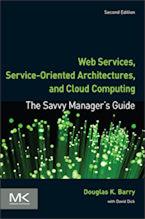Inheritance Object Model Concept
Inheritance in the object model is a means of defining one class in terms of another. This is common usage for most of us. For example, a conifer is a type of tree. There are certain characteristics that are true for all trees, yet there are specific characteristics for conifers.
Note that in an object model, there is no distinction in usage between system pre-defined types and user-defined types. This is known as extensibility. So it is possible to define a type as a sub-type of a system type or as a sub-type of a user-define type.

So, if you would look at a Student object, you would see attributes of name, date of birth, parents, children, and student ID.
For more on methods, see dispatching.
More Detail on Inheritance Object Model Concept
Context for Inheritance Object Model Concept
Related Articles for Inheritance Object Model Concept
The Savvy Manager's Guide
Douglas K Barry is also the author of a book that explains Web Services, service-oriented architecture, and Cloud Computing in an easy-to-understand, non-technical manner.
Web Services, Service-Oriented Architectures, and Cloud Computing: The Savvy Manager's Guide (Second Edition)
by Douglas K Barry with David Dick
This is a guide for the savvy manager who wants to capitalize on the wave of change that is occurring with Web Services, service-oriented architecture, and—more recently—Cloud Computing. The changes wrought by these technologies will require both a basic grasp of the technologies and an effective way to deal with how these changes will affect the people who build and use the systems in our organizations. This book covers both issues. Managers at all levels of all organizations must be aware of both the changes that we are now seeing and ways to deal with issues created by those changes.

